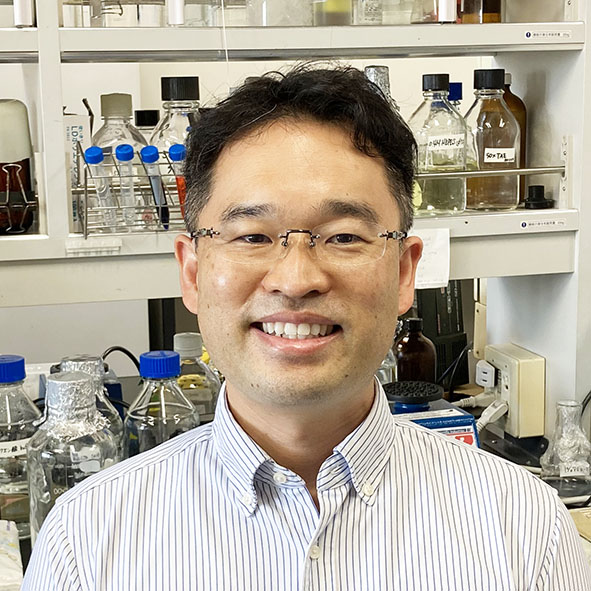Related Outline
The body shape of vertebrates, including humans, is characterized by the formation of a three-dimensional morphology by the epithelium and the undifferentiated mesenchyme just below the epithelium during development, followed by the formation of a skeletal pattern inside. Most of the studies on morphogenesis mechanisms in the field of developmental biology so far have focused on micro-local cell dynamics, which can be observed using a confocal microscope in a single tissue such as epithelium. However, many organs of vertebrates are formed as macroscopic three-dimensional morphology through the coordinated development of interacting tissues of different origins. In other words, understanding the mechanism of coordinated development between different tissues is essential for understanding the morphogenesis of macroscopic organs in vertebrates. Through this research, I hope to discover a new principle of the macroscopic morphogenesis mechanism of the whole organ.
Career
Takayuki Suzuki graduated Department of Applied Chemistry, Faculty of Science and Technology, Keio University, and completing the MS course at the Graduate School of Science and Technology, majoring in biomedical engineering, completed the doctoral course at the Graduate School of Bioscience, Nara Institute of Science and Technology. 2004 Postdoctoral fellow at the Department of Anatomy, University of Wisconsin, USA. 2007: Assistant Professor, Institute of Aging and Cancer, Tohoku University; 2008: PRESTO Researcher, JST Science and Technology Agency (concurrent); 2010: Assistant Professor, Department of Biology, Graduate School of Science, Nagoya University; 2016: Lecturer; Graduate School of Bioagricultural Sciences Department of Animal Science as Associate Professor. He was appointed as Professor in Osaka Metropolitan University, Graduate School of Science, from 2022.
Representative Achievements
- Uterus-specific transcriptional regulation underlies eggshell pigment production in Japanese quail.
Ishishita S, Kitahara S, Takahashi M, Iwasaki S, Tatsumoto S, Hara I, Kaneko Y, Kinoshita K, Yamaguchi K, Harada A, Ohmori Y, Ohkawa Y, Go Y, Shigenobu S, Matsuda Y, Suzuki T.
PLoS One. 17, e0265008 (2022)
DOI: https://doi.org/10.1371/journal.pone.0265008 - Deletion of IHH and NHEJ1 causes the dominant semi-lethal trait of the Creeper chicken.
Kinoshita K. †, Suzuki T. †, Koike M. †, Nishida C., Koike A. Nunome M., Umemura T. Ichiyanagi K., Matsuda Y.
Communications Biology, 3, 144 (2020)
DOI: https://doi.org/10.1038/s42003-020-0870-z - Anatomical integration of the sacral-hindlimb unit coordinated by GDF11 underlies variation in hindlimb positioning in tetrapods.
Matsubara Y., Hirasawa T., Egawa S., Hattori A., Suganuma T., Kohara Y., Nagai T., Tamura K., Kuratani S., Kuroiwa A., Suzuki T.
Nature Ecology and Evolution, 9, 1392-1399 (2017)
DOI: https://doi.org/10.1038/s41559-017-0247-y - Quantitative analysis of tissue deformation dynamics reveals three characteristic growth modes and globally-aligned anisotropic tissue deformation during chick limb development.
Morishita Y., Kuroiwa A., Suzuki T.
Development, 142, 1672-1683 (2015)
DOI: https://doi.org/10.1242/dev.109728 - Bayesian inference of whole-organ deformation dynamics from limited space-time point data.
Morishita Y., Suzuki T.,
J. Theor. Biol., 357, 74-85 (2014)
DOI: https://doi.org/10.1016/j.jtbi.2014.04.027

